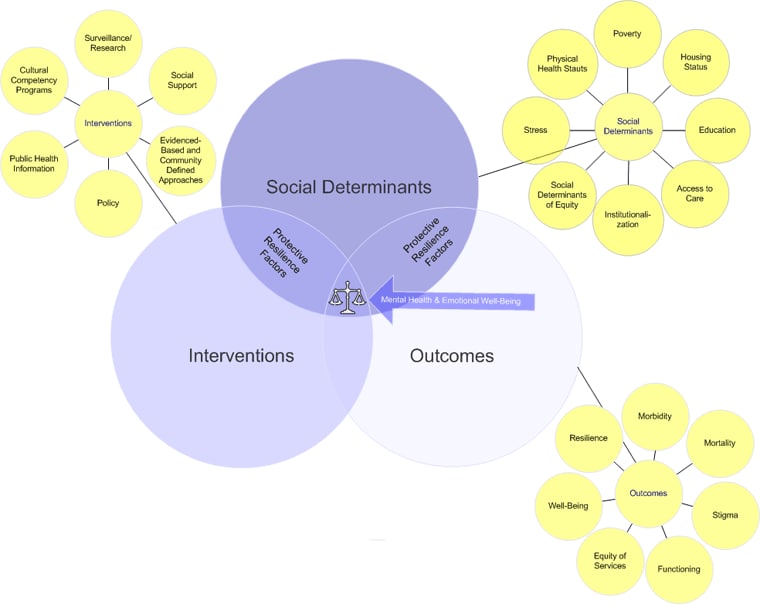The Role of Public Health in Addressing Racial and Ethnic Disparities in Mental Health and Mental Illness
Figure. A proposed model to illustrate the interactions of social determinants, interventions, and outcomes to promote mental health. This figure depicts 3 interlocking circles, labeled “social determinants,” “interventions,” and “outcomes.” In the overlapping area between “social determinants” and “interventions” and between “social determinants” and “outcomes” are the words “protective resilience factors.” At the intersection of all 3 circles is a balanced scale that represents mental health and emotional well-being. Each circle is also separately depicted with “spokes” leading to other circles. The smaller circles depict concepts that define the larger circles. The spokes for “social determinants” lead to “poverty,” “housing status,” “education,” “access to resources,” “institutionalization,” “social determinants of equity,” “stress,” and “physical health status.” The spokes for “interventions” lead to “social support,” “surveillance/research,” “cultural competency programs,” “public health information,” “evidence-based and community-defined approaches,” and “policy.” The spokes for “outcomes” lead to “morbidity,” “mortality,” “stigma,” “functioning,” “equity of services,” “well-being,” and “resilience.” |
|
|
|
|
|
|
|
